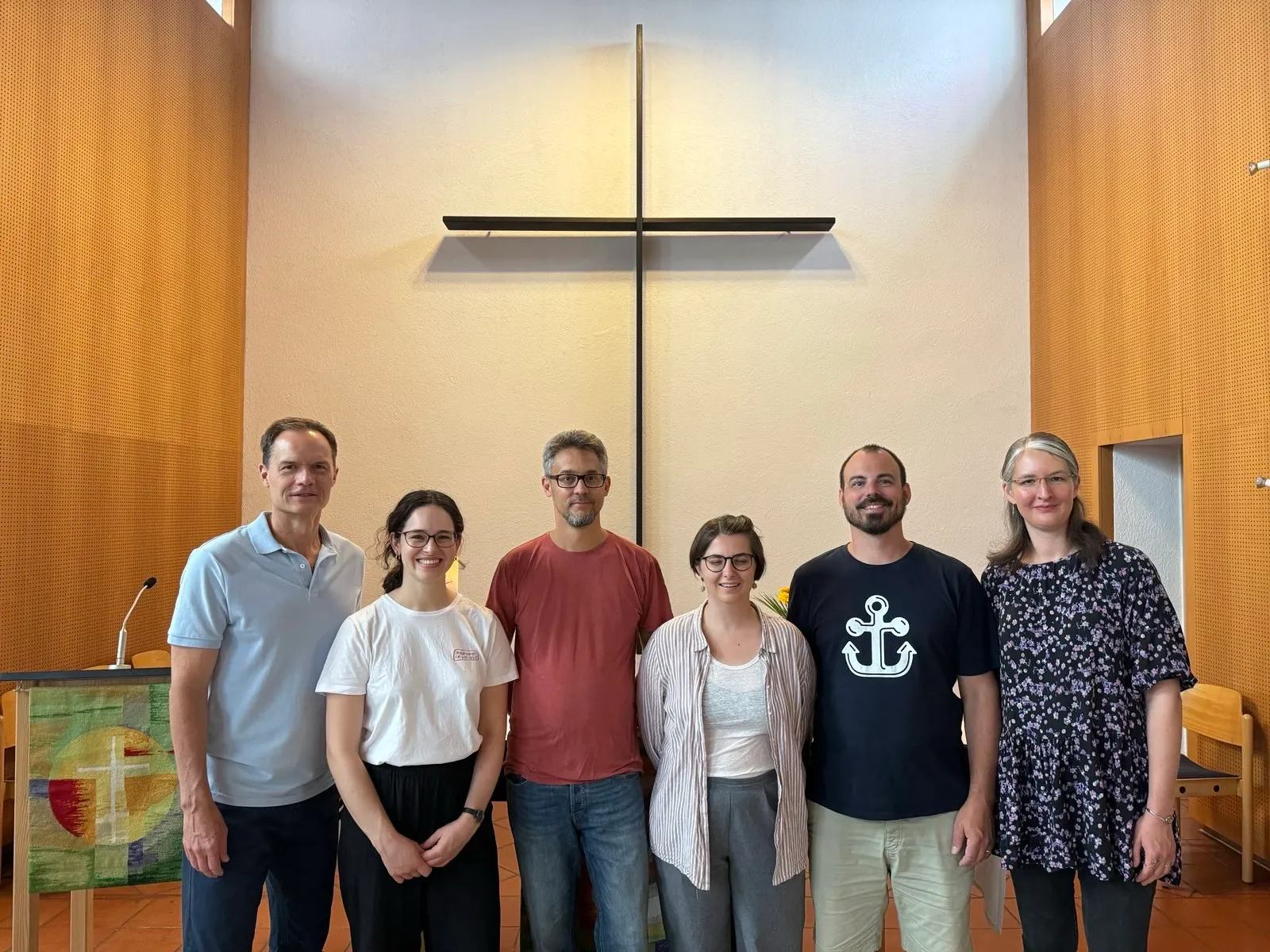"The Christian Way and Learning Community Network" has started its work with the first meetings of the steering team
News

In May 2024, the Annual Conference adopted a concept for a new "Christian Way and Learning Community Network".
In this context, six people from different areas of the church were elected as a steering team and sent by the Annual Conference to promote this network structure in the UMC Austria and to strengthen the idea of networking in all areas of the church. The steering team itself forms a spiritual community and has the task of collecting, developing and steering the efforts corresponding to the mission of the UMC in Austria.
Mission is an "invitation to a Christian Way and Learning Community"
Kickoff-meeting
On July 7-8, the steering team met in Vienna to discuss the initial steps of setting up the network as well as its areas of responsibility and to clarify the necessary framework.
It was important for the members of the team to understand clearly that the steering team is not the network itself. It is a hub - albeit a central one - in the large "network of relationships" that is UMC Austria. The steering team connects different areas of activities and work in the church and the individual local congregations and thus promotes the further development of the large "church" network.
The steering team consists of six individuals representing different areas:
- Children and youth work (Pastor Martin Obermeir-Siegrist, Linz and Ried)
- Laity (Conference Lay Leader Maria Sonnleithner)
- Clergy (Superintendent Pastor Stefan Schröckenfuchs)
- Creation care (ESUMC Lay Delegate Simone Viljoen)
- Education (Pastor Dorothee Büürma, Salzburg)
- Internationalism and diversity (Pastor John Calhoun, ESUMC)
Depending on specific questions/ topics, the meetings of the steering team are supplemented by other connected people who can contribute their knowledge and experience on specific topics.
The steering team sees itself as a learning community.
In order to gather information about existing groups, initiatives, interests etc. from the congregations, the steering team first wants to listen to the experiences of the congregations.
In particular, the area of work with children and young people should be the initial focus.
The steering team also wants to take a closer look at what is meant by a Christian Way and Learning Community. How can this succeed?
Let's go!
An initial "roadmap" was drawn up with the help of process consultant Ben Nausner and the steering team will focus on these areas and issues in monthly meetings.

Was ist eine Jährliche Konferenz? Welche Strukturen gibt es in der EmK?
Entscheidungen werden grundsätzlich in demokratischer Weise gemeinsam von Laiinnen und Laien sowie den Pastorinnen und Pastoren in den dafür vorgesehenen Gremien (Konferenzen) getroffen.
Die Evangelisch-methodistische Kirche hat eine demokratische Struktur. In den Konferenzen (Synoden) werden Beschlüsse gemeinsam von Laiinnen und Laien und Pastorinnen und Pastoren gefasst, und Bischöfinnen und Bischöfe gewählt. Die Rolle der Bischöfinnen und Bischöfe besteht darin, die kirchenleitenden Gremien in den Entscheidungsprozessen anzuleiten und die Kirche in der Erfüllung ihrer Aufgaben zu beaufsichtigen. Die Evangelisch-methodistische Kirche in Österreich gehört zusammen mit anderen europäischen Ländern zum Amtsbereich von Bischof Dr. Stefan Zürcher, der seinen Sitz in Zürich hat.
Die Evangelisch-methodistische Kirche (EmK) in Österreich
- - ist als Teil der United Methodist Church mit ca. 12 Millionen in mehr als 130 Ländern weltweit eine internationale Kirche. Den im Weltrat Methodistischer Kirchen (World Methodist Council) verbundenen Kirchen gehören derzeit ca. 90 Millionen Mitglieder an.
- - ist aus der „Methodistischen Bewegung“ hervorgegangen, die im 18. Jahrhundert als Sozial- und Heiligungsbewegung in der Kirche von England entstanden ist. Zu den Begründern der Methodistischen Bewegung gehören die Brüder und Pfarrer der Kirche von England John und Charles Wesley.
- - betont die Verbindung von sozialem Engagement (Liebe zum Nächsten) und persönlicher Frömmigkeit (Liebe zu Gott). Der soziale Schwerpunkt kommt auch in der einzigen „bekenntnisartigen“ Schrift, dem Sozialen Bekenntnis der EmK, zum Ausdruck.
- - ist eine Kirche, die in der Zeit der Aufklärung entstanden ist. Gemäß dem Ideal von John Wesley ist jede Christin, jeder Christ berufen, zu denken, und denken zu lassen („Think and let think“). Sie misst der Frage nach der persönlichen Glaubenspraxis und Lebenshaltung mehr Bedeutung zu als Fragen der lehrmäßigen Doktrin.
- - ist eine evangelische Kirche und steht als Mitgliedskirche der Gemeinschaft Evangelischer Kirchen in Europa in Kirchengemeinschaft z.B. mit der Lutherischen und der Reformierten Kirche in Österreich.
- - ist in Österreich seit 1871 tätig und hat heute ca. 1500 Mitglieder in neun Gemeinden. Es gibt derzeit sechs hauptamtliche Pastorinnen und Pastoren.
- - wurde 1951, fast 60 Jahre nach dem ersten Ansuchen, staatlich anerkannt. Sie ist somit Körperschaft Öffentlichen Rechts und bildet in Österreich eine einzige Kultusgemeinde.
- - ist Gründungsmitglied des Ökumenischen Rates der Kirchen in Österreich.
- - ist eine demokratisch verfasste Kirche, deren Leitungsgremien paritätisch von Ordinierten (Pastor*innen) und Nichtordinierten (Laien) besetzt sind. Alle Ämter stehen Frauen und Männern gleichermaßen offen.
- - ist Teil der Zentralkonferenz (Bischofssprengel) Mittel- und Südeuropa, die derzeit unter der Aufsicht von Bischof Dr. Stefan Zürcher in Zürich steht. Der jeweilige Bischof / die Bischöfin wird in seiner / ihrer Abwesenheit von einer von ihm ernannten Superintendentin / einem von ihm ernannten Superintendenten vertreten.
- - ist Trägerin und Eigentümerin der Diakonie Zentrum Spattstraße gGmbH in Linz. Gegründet 1963, leistet die Spattstraße seit bald 60 Jahren innovative Arbeit im Bereich der Kinder- und Jugendwohlfahrt (und darüber hinaus) und ist zu einer unentbehrlichen Einrichtung in der oberösterreichischen Soziallandschaft geworden.
News